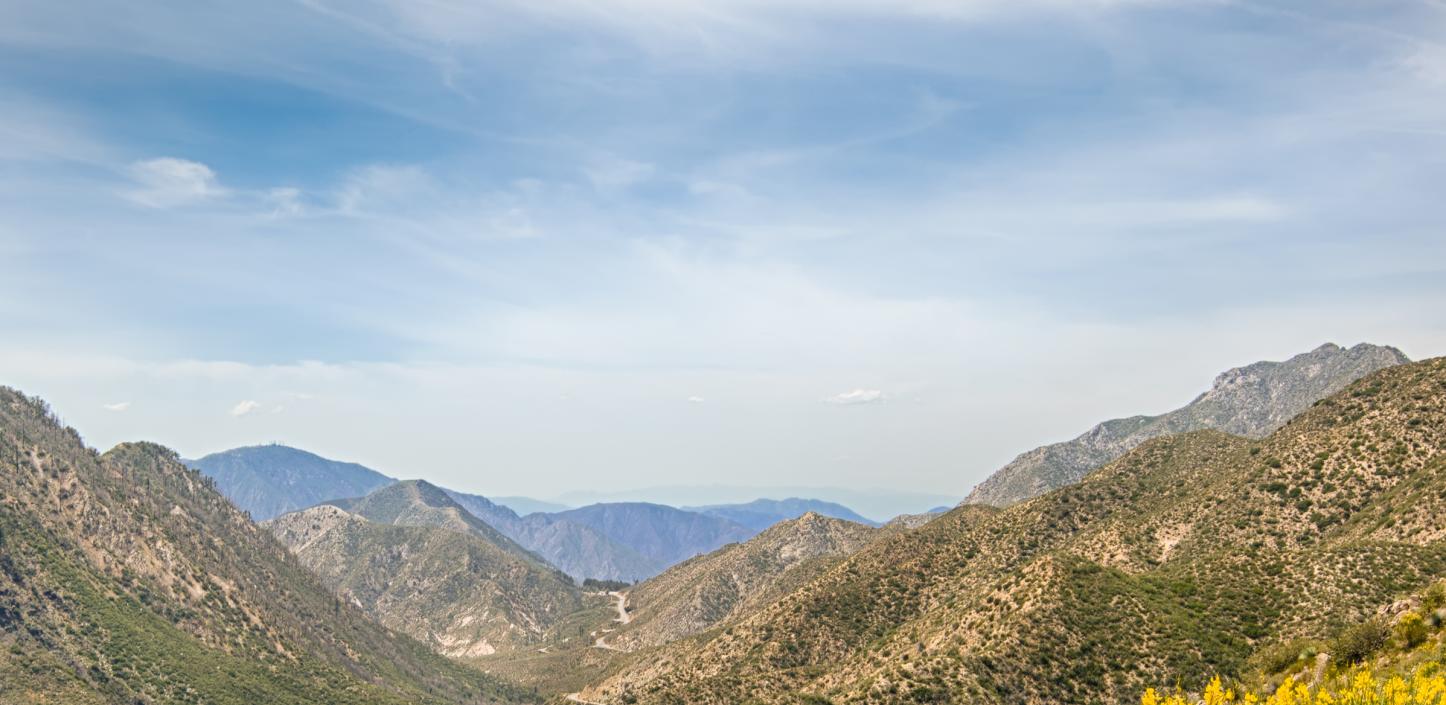
Angeles National Forest
The Angeles National Forest serves as the picturesque backdrop for one of the country’s largest urban centers, providing approximately 700,000 acres of open space to the roughly 18 million residents of the greater Los Angeles metropolitan area. The first national forest designated in California, the Angeles National Forest is located within one of the world’s vital biodiversity hot spots. In addition, the forest contains the San Gabriel Mountains, which are some of the steepest and most rugged mountains in the United States. The forest is home to many natural and cultural resources unique to Southern California, including a variety of threatened, endangered and other species of special concern. In addition to managing and maintaining the unique ecosystems of the region, the Angeles National Forest also provides opportunities to experience nature and the outdoors for almost 4 million visitors annually.
A series of wildfires – the Copper Fire of 2002, Sayre Fire of 2008 and Ranch Fire of 2007 – burned approximately 37,000 acres of national forest lands and left a significant impact on the landscapes, watersheds and ecosystems of the region. The Angeles National Forest has partnered with NFWF to restore the watersheds and ecosystems affected by these wildfire events. Through this program, NFWF will invest in projects that provide sustainable and lasting ecological benefits, promote ecological resilience to future wildfire events, improve Angeles National Forest’s capacity to identify and address resource management issues stemming from these fires, and repair critical infrastructure such as trails, roads and fuel breaks damaged by fire, particularly where they have a discernable connection to the goals of ecological restoration.
Examples of current restoration priorities include:
- Reestablish native vegetation through management practices such as invasive species eradication and revegetation to restore disturbed and degraded areas and limit erosion
- Employ strategies that both restore historic vegetation communities’ conditions and maintain and strengthen ecosystem and wildlife populations’ resilience to future fires and a changing climate
- Improve stream channel integrity and habitat connectivity in impacted streams such as San Francisquito Creek
- Target restoration and protection within sub-watersheds or geographic areas critical to maintaining threatened, endangered and sensitive species
- Develop tools and information for the Angeles National Forest and its partners that provide immediate benefits for effective planning of resource management actions, evaluating success and guiding future restoration
- Evaluate and, where necessary for ecosystem recovery, repair or decommission non-natural features such as trails and roads impacted by wildfire
- Foster opportunities to educate the public, engage youth in conservation, and promote the cultural and environmental value of the Angeles National Forest